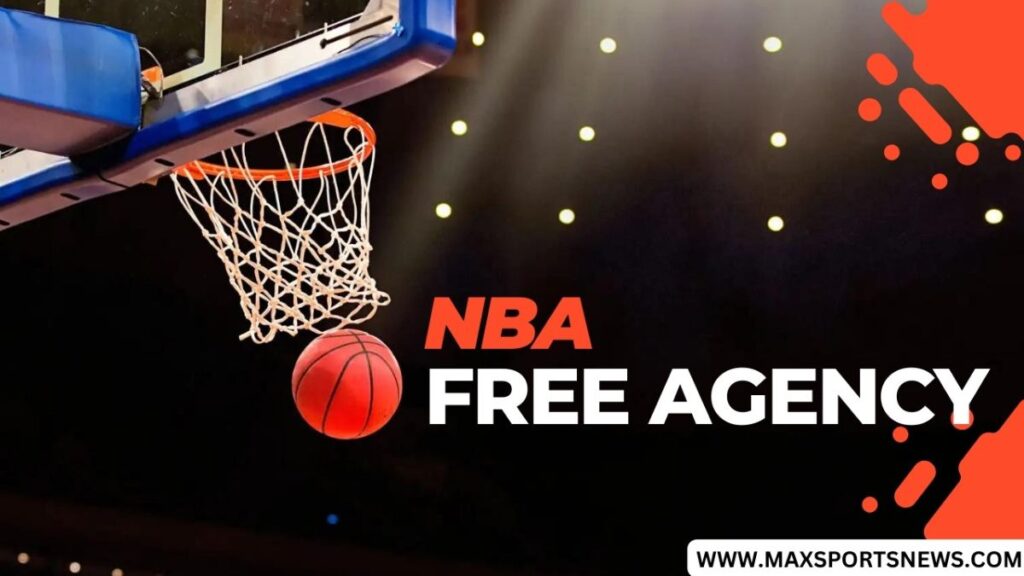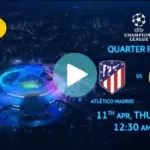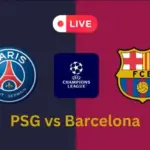The NBA free agency season is still underway. Many outstanding players are still not signing their contracts. Despite, some deals having already been signed. The following is a list of the top NBA free agents who are still available to sign with other teams, along with information on their current teams and many other details. The ban on player-team contract extensions was lifted on June 30, ushering in the start of free agency in the National Basketball Association (NBA). The ability to officially sign contracts by both clubs and players will soon be available, and we have created a record of every speculated and official free agency deal to this point.
When does free agency begin in the NBA?
June 30. 2022
Document every player who signs with a new team during the 2022 NBA free agency period. Nikola Jokic, the reigning Kia MVP, extended his contract with the Nuggets for five more years. On June 30, the moratorium on NBA free agency was lifted, allowing players and clubs to begin contract negotiations.
When NBA free agency start 2022?
The offseason kickoff on August 2 will mark the beginning of the free agency period for the 2022 NBA season. At six o’clock on Monday evening, both teams and players are free to begin bargaining with one another. After midnight on Friday, August 6, the start of formal transaction processing will take place.
The list of NBA free agency 2022:
- Atlanta Hawks
- Boston Celtics
- Brooklyn Nets
- Charlotte Hornets
- Chicago Bulls
- Cleveland Cavaliers
- Dallas Mavericks
- Denver Nuggets
- Detroit Pistons
- Golden State Warriors
- Houston Rockets
- Indiana Pacers
- La Clippers
- Los Angeles Lakers
- Memphis Grizzlies
- Miami Heat
- Milwaukee Bucks
- Minnesota Timberwolves
- New Orleans Pelicans
- New York Knicks
- Oklahoma City Thunder
- Orlando Magic
- Philadelphia 76ers
- Phoenix Suns
- Portland Trail Blazers
- Sacramento Kings
- San Antonio Spurs
- Toronto Raptors
- Utah Jazz
- Washington Wizards
NBA Free Agency Terminology
In this article, we’ll give you a quick rundown of the major phrases that NBA free agents use during free agency, along with some information about them.
Limited Freedom of Agency
If a player is an RFA, his original team has the option of keeping him by matching the conditions of any offer sheet he signs with another club. There is a “right of first refusal” that goes to the initial group. Free agency is available to former first-round Draft choices upon expiring their fourth-year “scale” rookie contracts.
Free agency for all NBA veterans with fewer than three seasons of service. One notable exception is a player who would have been a first-round Draft choice after his second or third season but whose club did not exercise its option to extend his rookie-scale contract for the next season. Afterward, these athletes are free to sign with any team in the league. A player leaving a two-way deal must have been on an NBA roster, either active or inactive, for at least 15 days prior to the end of the two-way contract.
A limited free agent may choose from the following five paths:
Play out the season on his team’s qualifying offer, then become a free agent in the offseason.
- Play under that long-term agreement, if offered; otherwise, decline his team’s highest qualifying offer.
- Work out a new deal with his original squad that is not contingent on a qualifying or maximum qualifying offer.
- Up to March 1, he may sign an offer sheet with another club, which his current team can choose to match (see below).
- If he hasn’t already signed a contract with another organization, try to work out a sign-and-trade deal with him.
- A player becomes a restricted free agent if no qualifying offer, contract, or offer sheet sign the previous summer by the original club.
Advertised Documents:
A restricted free agent will sign an offer sheet with a competing organization when he wants to leave his current team and join the new one. The player’s original club allows two days to match the offer, which must be for at least two seasons.
If the club accepts the player’s offer, the player will remain under contract with his previous team but under the conditions of the offer sheet. The player will be under contract with the new club if the original team does not match within two days.
For as long as the player refuses to report for a physical with his original team within two days following the match, the first refusal exercise notice will be in effect. If the player doesn’t show up for a physical, the original club may revoke its first refusal exercise notice.
When that happens, the offer letter and notice are null and void, and the player is once again a restricted-free agent. An offer sheet club ban prevents him from joining or acquiring the club for a period of 12 months. Until the offer sheet becomes official or the original club exercises its right of first refusal, the team making the offer must have sufficient salary cap capacity to cover the whole of the offer.
If the new club’s offer exceeds the original team’s salary cap, the old team cannot accept it. The budget of the initial team must be large enough to accommodate the base pay plus any improbable bonuses that may be included in the offer letter.
Conforming Bids:
A player may become a restricted free agent if his current club makes him a qualifying offer between the day following the conclusion of the NBA Finals and June 29. If a player accepts a qualifying offer, which is often a one-year guaranteed contract, that offer stands indefinitely and the player’s contract is transformed into a standard one. In this way, the club will not have the option to sign the player without extending an offer of employment first.
If a player is leaving a normal contract (not a Two-Way), he may be eligible for a higher or lesser qualifying offer depending on whether or not he reached the “starting criterion” last season, or the average of the two seasons before to that. Minimum requirements for starter status are 41 regular season starts or 2,000 minutes played. Unless otherwise extended, qualifying deals will expire on October 1.
A qualifying offer extension, however, cannot occur after March 1. If the qualifying offer deadline passes without the player withdrawing or accepting the offer, the player remains a restricted free agent. Since the deadline only impacts the player’s ability to accept his qualifying offer, the team and player are free to continue contract negotiations after the deadline has passed.
A player is free to accept the qualifying offer at any time and play under its rules the next season. Free agency without any restrictions the next offseason is a common motivation for this practice.
Restrictions of NBA Free Agency:
A UFA is a player who has not signed to any one organization. After signing, they will officially be a member of the new squad. Some unrestricted free agents, however, may be limited in their decision-making if they decide to exercise options in their current contracts.
Moratorium Of NBA Free Agents:
From July 1st until the 6th, clubs prohibit negotiating with or signing any free agents. Contract talks between clubs and free agents may begin on June 30 at 6 p.m. ET. Although, they won’t be able to formally sign until July 6 at 12:01 p.m. ET. Any contracts can reach during the moratorium period. Those consider agreements. Although neither the player nor the club is bound by them.
DeAndre Jordan broke his verbal contract with the Dallas Mavericks and re-signed with the Los Angeles Clippers in 2015, so any party might back out. There are exceptions to the signature ban, which are as follows: The practice of giving first-round Draft choices affordable rookie contracts.
• Players selected in the second round of the draft who accept the mandatory tender, in which their club must make a one-year contract offer in order to retain their rights. Accepting qualifying offers from their current club is a legal option for restricted free agents.
An RFA who is entering free agency after completing the fourth year of his rookie scale contract is eligible to receive a maximum qualifying offer. The original club has two days after the restricted free agent signs the offer sheet to match the offer. Minimal wage contracts for one or two seasons might be made with players (but the deals have no bonuses of any kind).
•Teams have the option of signing players to Two-Way contracts, converting existing Two-Way deals into regular NBA contracts, and converting certain standard NBA deals into Two-Way deals. This means that clubs have the option to either waive a player or claim a player who has been waived by another team. If the moratorium is still in effect, no new signings may take place.
Choices for a Group Effort With a club option, the player’s current team may negotiate to retain him for another season. If a player signs a three-year deal with a fourth-year club option, the deal will last for four seasons total if the team decides to use the option. A club has the opportunity to extend the contract for a fourth year, but if they don’t, it will expire at the conclusion of the third (in this example).
After exercising the option, the team cannot change its mind, since it is irrevocable once used. There cannot be any restrictions on a team’s options, such as its record, player scoring average, or the number of games played. A single choice year is possible (except in the case of rookie-scale contracts).
First-round draft choices often have a club option in their rookie scale contracts before their third and fourth seasons. The compensation during an option year must be at least as high as it was during the previous season. Choices for Players With a player option, the player has the choice to either remain with the team for another season or leave as a free agent.
If a player signs a three-year deal with a fourth-year option, the deal will last for four years if the player decides to play out the option. Assuming the athlete in this case does not exercise the option, the contract will expire after the third season. The player then becomes a free agent who may sign with any team. Having executed an option, the player cannot cancel it later on.
In other words, a player’s option cannot be dependent on performance metrics like minutes played, victories, or points per game. A single choice year is possible (except in the case of rookie-scale contracts). First-round draft choices often have a club option in their rookie scale contracts before their third and fourth seasons. The compensation during an option year must be at least as high as it was during the previous season.
Departure Options
The player has the ability to cancel the contract before its stated expiration date. There is a four-year minimum on the length of the contract before the option can be exercised, so a five-year deal is required. If the athlete decides against taking use of the option, he will stay with his current club.
If the option is picked up on, he becomes a free agent and may sign with any club he likes. The player always has the opportunity to end the game early (in other words, there are never team early termination options). Any contract with an ETO that has been exercised will expire immediately.
Requirements for Salary Cap:
The Salary Cap allows for eleven different categories of exceptions for NBA clubs. The following are the circumstances in which a team may go over the wage cap:
• Qualifying Veteran Free Agent Exception (also known as the “Bird” Exception): A team may re-sign its own free agent to a contract with a first-year salary of up to the maximum player salary if he played for the team in some capacity in each of the previous three consecutive seasons (or if he changed teams, he did so by trade or by assignment via the NBA’s waiver procedures during the first of those three seasons). Early Bird Free Agent, or Qualified Veteran Free Agent (Quad A) If a free agent has spent at least part of the previous two seasons with the same team (or, if he changed teams, did so via a trade or assignment via the NBA’s waiver procedures), his new team may offer him a contract with a first-year salary of up to the greater of
(a) 175% of the player’s salary in the final season of his prior contract or
(b) 105% of the average player salary for the prior season. All Early Bird Exception contracts are for a minimum of two seasons (not including any option year).
Non-Bird, or Non-Qualifying Veteran Free Agent Any player who is not a “Bird” or a “Early Bird” may be re-signed by his former team for a first-year salary of up to the greater of
(a) 120% of his salary from the final season of his previous contract,
(b) 120% of the player’s applicable minimum salary for the current season, or
(c) his Qualifying Offer amount if he is a Restricted Free Agent. A team can use the Biannual Exception to pay up to $3.382 million in base salary in the first year of a multi-player contract signed under the Biannual Exception.
Contracts signed under this provision cannot cover more than two seasons or be used in consecutive years. At last, teams can use this loophole to re-sign their own free agents, but they cannot use it to acquire a player by assignment.
• Non-Taxpayer Mid-Level Salary Exception: Using this exception, a team may pay a player or players a total of up to $8.641 million in their first year of service. When this clause is included in a contract, it may be for up to four seasons.
Re-signing a free agent is another valid use of this loophole; however, assigning a player is not. The Taxpayer Mid-Level Salary Exception allows teams to pay a maximum of $5.337 million in first-year compensation to one or more players signed to contracts under the exception.
Re-signing a free agent is possible with a contract of up to three seasons’ duration if this provision is used. On the other hand, it cannot be utilized to acquire a player via assignment. If a team has Salary Cap room at any time. During a Salary Cap Year and not using the Bi-annual Exception. The Non-Taxpayer Mid-Level Salary Exception, or the Taxpayer Mid-Level Salary Exception in that Salary Cap Year.
Then the team may use the MLSE for Room Teams to sign one or more players to contracts. With first-year salaries that, in the aggregate, provide for a total of up to $4.44 million. This provision allows teams to re-sign their own free agents for up to two seasons on multiyear contracts. But, it cannot be utilized to acquire a player through an assignment.
• First-round draft picks are eligible for signing bonuses of up to 120%. On the Rookie Salary Scale if the team selects them. (Please note that a new Rookie Salary Scale will announce before each new season to accommodate from the preceding year. Teams can sign players to one- or two-year contracts at minimum player wage (prorated for 10-Day or Rest-of-Season contracts)).
It is also possible to utilize this exception to acquire a player on a one- or two-year minimum via contract. (Note: Like the Rookie Salary Scale, the Minimum Annual Salary Scale will change every season. The new scale will announce before the start of the Moratorium Period. For that, the season can account for any changes to the Salary Cap from the previous season.)
A team can use the Disabled Player Exception to replace a season-ending injury or sickness. The player with a salary up to 50% of the handicapped player’s existing salary OR the Non-Taxpayer Mid-Level Salary Exception for the season the exception is invoked. Disabled Player Exception rules: For a Salary Cap Year, request between July 1 and January 15. Accidents or illnesses occurred during the Salary Cap Year.
If a player is acquired through assignment, he must be in the final season of his contract. The deal that can negotiate for him must be for one season. A Disabled Player Exception will expire one year after it is granted, on March 10 of the following year. (Editor’s note: Don’t worry, this one is difficult.)
Exception for a Traded Player Any player whose contract transferred to another club the previous year. One may replace by a player or players acquired through assignment the following season. The following principles apply to both non-simultaneous and simultaneous trades. For teams whose post-assignment Team Salary is equal to or less than the Tax Level. (for purposes of this rule, a “non-taxpaying” team).
A traded player may replace concurrently (i.e., in the same transaction) by one or more players acquired by assignment. Whose aggregate salaries do not exceed the greater of (A) 175% of the salaries of the players being traded plus $100,000, or For teams whose post-assignment Team.
Salary can increase the Tax Level for the then-current Salary Cap Year (for purposes of this rule, a “taxpaying team”). A traded player may be replaced simultaneously. It is legal to replace a player involved in a non-concurrent transfer. With one or more players obtained through assignment, as long as their total wages do not exceed the sum of (100%). The salary of the player can move plus ($100,000).
The aforementioned Transfer of Player Exception amounts will not generate. For the traded player under specific conditions related to sign-and-trade deals. To be more precise, if a team exceeding the Salary Cap signs an Early Bird or Bird free agent to a sign-and-trade contract. The first year’s salary of the contract is greater than 120% of the player’s salary in the prior season. Then, for purposes of calculating the assignor team’s Traded Player Exception.
the player’s salary will deem equal to the greater of the salary for the last season of his prior contract or 5% of the
(i) Beginning with the 2017-18 season (but solely with regard to the extended period in the event of extensions), for any new contracts or contract extensions. In the event that a player’s salary protection is less than full, the amount of the player’s protected. Salary in the applicable season will be used to determine. The Traded Player Exceptions resulting from the trade of such contracts. (rather than the total of the player’s protected and unprotected salaries); and
(ii) with respect to trades conducted after the last day of a regular season. The amount of the player’s protected salary will be used to determine the Traded Player Exceptions.
How do you become a Restricted NBA free agency?
When a player’s current team has the “Right of First Refusal” (RFA), any offer gives another team to sign him. The player is considered a “Restricted Free Agent” (called an Offer Sheet). Right of First Refusal does not apply until the existing club makes it. The player an offer that meets the requirements of the CBA. (called a Qualifying Offer)
The following are the avenues via which a player may become a Restricted Free Agent: Selections at the Top of the First Round of the Draft. An organization may prevent a first-round pick from becoming a Restricted Free Agent by extending him. A Qualifying Offer after his rookie scale contract has ended (where the team exercised its third and fourth year options).
Other Players — A Restricted Free Agent will be any player whose contract expires after any of his first three seasons in the league and the team extends him a Qualifying Offer. With the exception of I a round draft pick whose team did not exercise the third or fourth-year option on. That player’s rookie scale contract.
When a two-way player’s two-way contract expires, he becomes a Restricted Free Agent if I he was on the club’s active or inactive list for at least 15 days of the regular season. In the previous season covered by the two-way contract, and (ii) the team makes him a Qualifying Offer. The information contain original data source Collected from Here.
Get More Information about NBA Free Agency.










